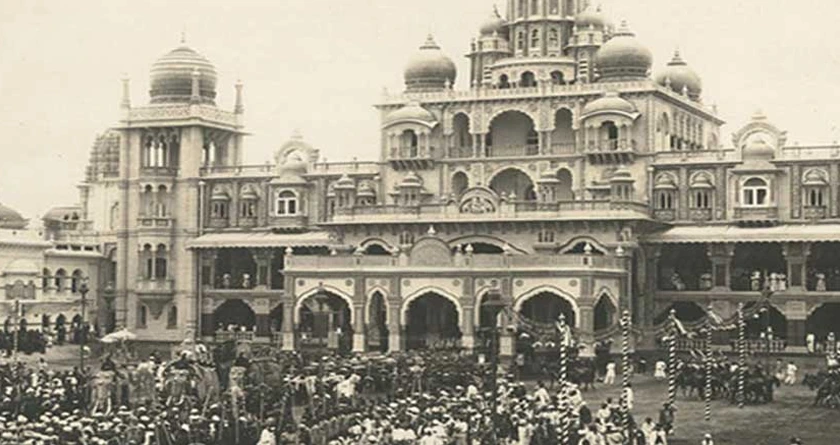
MYSURU PALACE HISTORY
MYSURU PALACE, WORLD-FAMOUS
Tuesday, 21st September 2021
MYSURU PALACE, WORLD FAMOUS
After its predecessor was destroyed in a fire in 1897, the current Mysuru Palace – the fourth to occupy this site – was designed by British architect Henry Irwin. The imposing structure that stands today was completed in 1912, but it is believed that the royal family of Mysuru, the Wodeyars, established a Mysuru Palace as part of a wooden fortress as early as the fourteenth century.
Kantirava Narasa Raja Wodeyar (1638 - 1659 AD) rebuilt the palace after it was struck by lightning in 1638. He extended the existing structures and added new pavilions.
The new building's radiance would be short-lived. The death of Chikka Devaraja Wodeyar (1673-1704 AD) in the eighteenth century threw the kingdom into political turmoil.
During these turbulent times, the Mysuru Palace fell into disrepair, eventually being demolished in 1793 by Tipu Sultan, the son of Hyder Ali, a maverick general in the king's army who rose to become the ruler of Mysuru.
When Tipu Sultan died in 1799, the five-year-old Krishnaraja Wodeyar III (1794-1868) AD ascended to the throne, the coronation ceremony was held under a marquee. One of the king's first tasks upon his accession was to commission the construction of a new palace in the Hindu architectural style, which was completed in 1803.
The hastily built palace quickly fell into disrepair and was destroyed by fire during Princess Jayalakshmmanni's wedding ceremony in 1897.
The fate of the Mysuru Palace was now in the hands of Queen Regent Kempananjammanni Vanivilasa Sanndihana, who commissioned well-known British architect Henry Irwin to build a new palace as a tribute to the legacy of Mysuru kings.
The Mysuru Palace that stands today was completed in 1912 at a cost of Rs. 41,47,913. A work of art in Indo-Saracenic architecture, comparable to great Mughal residences in the north and stately colonial public buildings in the south.
The Mysuru Palace, designed by English architect Henry Irwin, dominates Mysuru's skyline. The palace, a three-story Indo-Saracenic structure built between 1897 and 1912, has beautifully designed square towers at cardinal points that are covered with domes.
The Durbar Hall, with its ornate ceiling and sculpted pillars, and the Kalyanamantapa (Marriage Pavilion), with its glazed tiled flooring and stained glass, domed ceiling, deserve special mention. Among the palace's other treasures are intricately carved doors, the golden howdah (elephant seat), paintings, and the fabulous, jewel-encrusted golden throne (displayed during Dasara). The residential museum (which includes some of the palace's living quarters), temples and shrines, including the Shwetha Varahaswamy temple, are all housed within the walled palace complex. The palace is illuminated on Sundays, public holidays, and during Dasara celebrations, when 97,000 electric bulbs are used.
The News Talkie Bureau
Source
www.mysorepalace.gov.in











